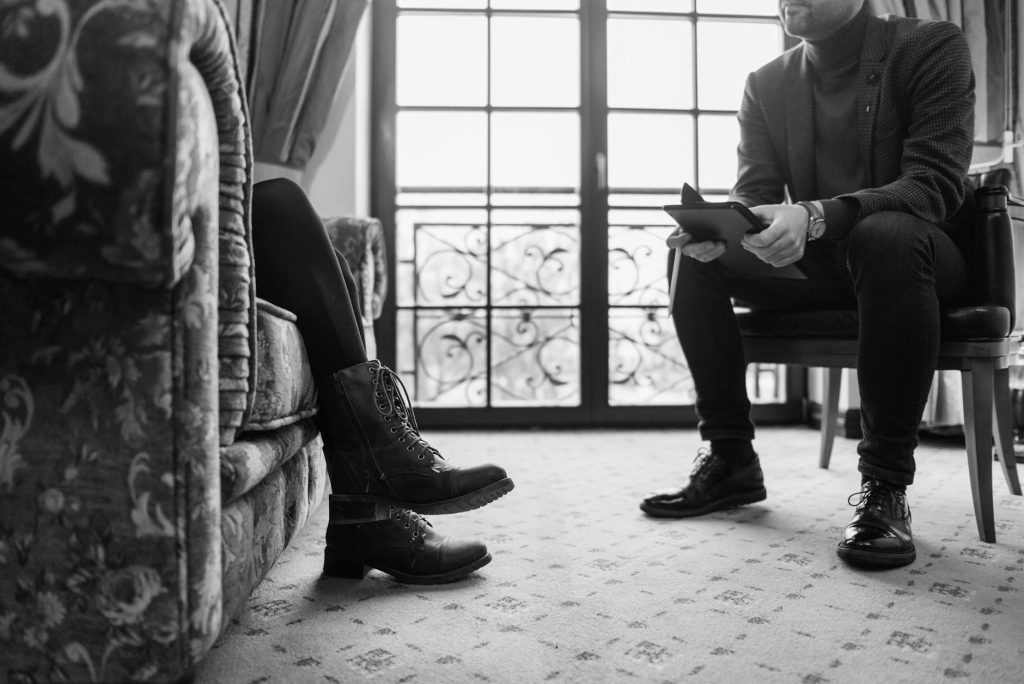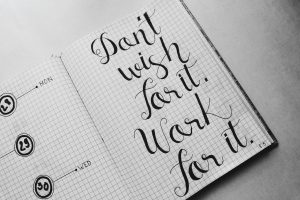Mastering Behavioral Interviews
Nailing a job interview ain’t about luck; it’s all about how you can spin those past workplace stories convincingly. Employers grilling candidates want to see past tales that might give a peek into the future. Ready to stand out? First, lace up for behavioral interviews.
Importance of Behavioral Interviews
These interviews are all about diving into real past experiences, not just you jabbering about “what if” scenarios. Interviewers dig into these because they believe past handling of situations can predict future behavior. Basically, they wanna see if you can dodge curveballs, make solid decisions, and pal around well with others.
When they pop those behavioral questions, your stories gotta have meat. Paint ’em a picture showing how you tackled problems or made key decisions. Serve up tales where you showed off those magical skills and smarts that scream, “I’m the one for you!”
How to Prepare for Behavioral Interviews
Get prepped like a boss! Here’s how you can gear up for those brain-pickin’ questions.
-
Understand the STAR Method: Get cozy with the STAR method (Situation, Task, Action, Result). It’s a neat trick to keep your answers as neat as a pin, laying ’em out clearly.
-
Review Common Questions: Practice makes perfect. Check out some common questions and rehearse your answers. Having a few polished stories on tap will help during the interview, ain’t no sweat.
-
Tailor Responses to the Job Description: Align your yarns with the job you’re gunning for. Make your past exploits match what they’re hunting for. This makes you look like an ace fit for the role.
-
Seek Feedback: Run through mock interviews with pals or mentors. Let them give you the lowdown on how you’re doing. Feedback helps smooth out the rough edges and boosts your game.
When you walk into an interview room, having your experiences ready to roll will make you stand tall. Prep hard and answer those tough questions with a boatload of confidence. Let potential employers see why you’re the hot ticket they’re seeking!
Popular Behavioral Interview Questions
When you’re in a behavioral interview hot seat, those questions aren’t just random—they want to see how you handled yourself back in the day. Sharpen up your answers for the most common queries and show them what you’re made of. Here’s a peek at the questions with a little breakdown of what they’re fishing for:
Tell Me About a Time When You Failed
This one’s about seeing how you bounce back when life throws a curveball. It’s less about the flop and more about the rebound. Here’s a handy way to dish out your story using the STAR method:
| STAR Method | Real-World Failure Story |
|---|---|
| Situation | I thought I had all the time in the world for a project, and then bam—I blew the deadline. |
| Task | It was on me to gather intel and hit the team with my market research findings. |
| Action | Missed the mark, admitted it, then pulled a couple of late-nighters to get things on track. |
| Result | I nailed time management and became a whiz at keeping everyone in the loop next time. |
Check out more tales of trial and triumph in our storybook of behavioral interview examples.
Describe a Situation When You Had to Work Under Pressure
They want to know if you’re cool as a cucumber when things heat up. Think about how you keep your head, get stuff done, and pull a win out of the chaos. Here’s how you frame it using STAR:
| STAR Method | Tales of Calm in Chaos |
|---|---|
| Situation | A high-stakes project suddenly hit turbulence, rattling deadlines and nerves. |
| Task | I was the go-to for keeping departments on the same page to hit deadlines and budget goals. |
| Action | Upped the check-ins, made sure everyone was talking and handed tasks like a quarterback. |
| Result | We hit all the marks, got kudos from the client, and the team bonded over the win. |
For more insights into tackling pressure situations, head over to our guide on how to tackle situational interview queries.
Share an Example of a Successful Team Project
They wanna see if you’re a team player, plain and simple. What part did you play? How’d you get the team to the finish line? Use STAR to keep the story tight:
| STAR Method | Teamwork Triumphs |
|---|---|
| Situation | Our all-stars from different departments came together to roll out a hot new product line. |
| Task | I did the market deep dive, helped shape the product’s look and feel, and synced the launch strategy. |
| Action | We huddled, we hashed things out, and nailed a killer launch through teamwork. |
| Result | Sales shot up 20%, customers were thrilled, and our team was tighter than ever. |
Check out more team tales in our article on team-oriented behavioral interview questions.
Nail these top behavioral interview questions and shine like the rockstar candidate you are. Practice makes perfect—so rehearse your stories, flash that victorious smile, and show how you’ll continue to score future victories.
Crafting Effective Responses
Nail those interview questions by showcasing your skills and experiences with style. The trick lies in the STAR Method, highlighting your top traits, and aligning your responses with the job description—ensuring the interviewer remembers you.
STAR Method (Situation, Task, Action, Result)
The STAR Method is your trusty blueprint for tackling those pesky behavioral questions. It boils down to four simple steps:
| Component | Description |
|---|---|
| Situation | Set the scene. Where were you? |
| Task | What was the legwork involved? |
| Action | Spill the beans on what you actually did. |
| Result | Wrap it up with what happened and how you made a splash. |
Following STAR helps paint a vivid picture for interviewers, showcasing your knack for solving problems and making sound decisions. It carves out a structured storyline they can easily follow, making it a breeze to judge what you bring to the table.
If you’re itching for more examples that use STAR, hop over to our article on behavioral interview questions examples.
Highlighting Skills and Experience
When the spotlight’s on you, flaunt those skills and experiences that scream, “I’m the one!” Zero in on your strengths by weaving in vivid examples of your expertise in action.
Highlighting these gems puts your capabilities center stage, nudging the interviewer towards the idea that you’re the perfect match. Tailor your responses to shine a light on the skills and experiences that hit home with the job you’re going after.
For more STAR-powered practice that can polish your answers, check out our article on sample star interview questions.
Tailoring Responses to the Job Description
For a knockout behavioral interview, tweak your story to match the job description. Scan what the role demands and spot those golden skills or experiences the employer’s eyeing. Then strut examples from your own past that show you’re ready to ace those challenges.
By mirroring your answers with what the job needs, you shout loud and clear that you’re in tune with the role and all set to shine. Tailoring responses makes your profile shine in a targeted way, helping the interviewer picture you as a great addition to their team.
If you’re looking to master the art of situational questions, dive into our guide on how to answer situational interview questions.
By blending STAR methodology, spotlighting your top skills and experiences, and tuning your replies to fit the role, you’ll breeze through behavioral interviews, leaving potential employers with the best impression of your capabilities.
Example Responses
Sprucing up your answers to common behavioral interview questions can make all the difference. Here’s how to shine when faced with three popular ones:
Example Response to “Tell Me About a Time When You Failed”
Situation: Once upon a time in my job as a project manager, I was juggling the launch of a new gadget. But it turns out, I bit off more than I could chew with our crazy tight schedule.
Task: I realized my blunder and huddled with the team to dig into what tripped us up in the first place.
Action: With sleeves rolled up, I jumped into reorganizing our game plan. We set clear roles, cranked up the talk among us, and I picked the brains of the higher-ups. We wanted to make sure we were on the right alley-oop.
Result: Despite the initial snag, we managed to launch our product without skimping on quality, just with a bit more time. This hiccup taught me a thing or two about setting real goals, chit-chatting effectively, and staying flexible in our plans.
Example Response to “Describe a Situation When You Had to Work Under Pressure”
Situation: While I was a sales rep, a major client’s surprise tweak to a campaign got dropped on my lap. It felt like a mad dash to the finish line.
Task: Facing the fire, I quickly sized up how these curveballs hit our deadlines and wallet.
Action: I shuffled our to-dos, rallied a team from different areas, and kept the client in the loop about what was doable and when. Even with time breathing down our necks, I stayed cool and aimed for excellence.
Result: With teamwork and smart moves, we pulled off the client’s changes without a hitch in our goals. This challenge boosted my chops in keeping it together, setting priorities, and getting stuff done no matter how tight the squeeze.
Example Response to “Share an Example of a Successful Team Project”
Situation: As a marketing coordinator, I steered the crew on a digital campaign, hoping to turn heads and boost our brand mojo.
Task: We needed a united front for brainstorming, laying out our master plan, and hitting every possible corner online.
Action: I set up meet-ups to sync up the team’s goals, handed out tasks matching everyone’s wheelhouse, and sparked a culture of fresh ideas and feedback. We also used data smarts to tweak as we went.
Result: By tapping into everyone’s talents, our launch not only met but smashed our lead and engagement goals. This win underscored how much synergy, open chats, and nimbleness can crush shared dreams.
By sticking with the STAR method, you can tell your story in a way that hooks interviewers, proving you’ve got the right stuff for the job. Always tweak your tales to match the role you want and show how you’ve grown and learned from what you’ve done.
Common Mistakes to Avoid
Nailing those behavioral interviews isn’t just about saying the right things — dodging the common blunders is key, too. By steering clear of these classic slip-ups, candidates can seriously boost their chances of leaving a solid impression:
Being Vague or Overly General
A huge no-no is talking in circles without really saying much. It’s like eating a sandwich with no filling—it just doesn’t do the job. Applicants should dive into their personal treasure chest of experiences and pull out those golden nuggets of stories that show clear skills and talents. Getting into the nitty-gritty of past situations lets candidates highlight things like problem-solving ability and flexibility.
Failing to Provide Concrete Examples
Answering these questions with nothing to back it up is like saying you can swim without ever jumping in the pool. This is where those real-life examples come in clutch. Simply listing skills is as effective as a chocolate teapot, but setting the scene with the STAR method (Situation, Task, Action, Result) can make those claims pop off the page.
Not Showing Personal Growth or Learning from Experiences
A pitfall that could trip anyone is forgetting to talk about how past experiences fueled personal growth. Employers want someone who not only learns from mistakes but gets better because of them. Sharing stories where challenges transformed into a step up allows candidates to show off resilience and continuous improvement, making them an overall stronger contender.
Avoiding these interview boo-boos will help candidates go through this challenging process with courage and genuineness. For more on putting together strong answers to countless behavioral interview questions, take a look at our behavioral interview questions guide.
Final Tips for Success
Mastering those pesky behavioral interviews can make you the star of your next job hunt. Here’s some straight-up advice to nail it when faced with those interview curveballs.
Practice and Rehearse Your Responses
Wanna ace that interview? Practice, practice, practice. Get familiar with common questions like they’re your morning coffee order. Use the STAR method—y’know, Situation, Task, Action, Result—to turn your experiences into stories worth telling. Try saying your answers out loud or run through them with someone who knows their stuff. If you need some solid practice questions, check out our article on behavioral interview questions examples.
Stay Calm and Confident During Interviews
Right, so keeping your cool matters a lot. Take a deep breath, pause, and then hit them with your best truth. Talk about your skills like you’ve been doing it your whole life, with a comfy mix of calm and cool. Listen up, and make sure you answer all their questions without going off on tangents. Wanna polish up more? We have tips and tricks in our sample STAR interview questions.
Follow-Up and Thank You Notes
After you’ve aced it, don’t forget the thank you note! Drop a quick message within 24 hours saying thanks for the chat, and remind them you’re super into the job. Mention a little something about why you’re the best person for it. We’ve got more on crafting the perfect note in our article on how to answer situational interview questions.
Add these tips to your bag of tricks, and you’ll handle those questions with grace. Keep remembering, preparation is your pal, keeping your nerves in check is your secret weapon, and showing gratitude will leave a good vibe. Go on, show them you mean business!




